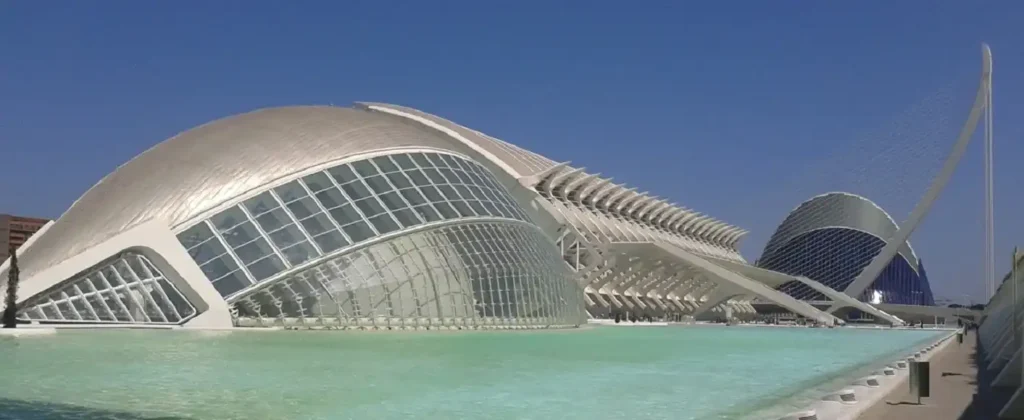Welcome to “Discover Valencia, the Costa Blanca and Spain”.
The Valencian Community, or Comunidad Valenciana, is an autonomous region on Spain’s eastern coast, consisting of three Provinces – Castellion in the north, Alicante in the south, and Valencia in the middle.
The Comunitat Valenciana is renowned for its diverse landscapes, it features pristine beaches along the Mediterranean, fertile agricultural lands, and mountainous interiors.
Valencia, the capital city, is known for its rich history, vibrant culture, and modern architecture.
The famous Fallas fiesta, is a UNESCO-recognized event featuring elaborate sculptures and fireworks.
Landmarks like the City of Arts and Sciences, a futuristic complex, and the historic Silk Exchange highlight its blend of old and new.

Ciudad de las Artes y las Ciencias
Alicante offers a mix of beautiful beaches, historical sites like Santa Bárbara Castle, and a lively marina.
Further north, Castellón is noted for its ceramics industry and picturesque coastal towns.
The region’s climate, with mild winters and hot summers, supports a thriving agricultural sector.
Valencia is particularly famous for its oranges and the Albufera lagoon, where rice is grown for the traditional dish, paella.
Culturally, the Valencian Community boasts a rich heritage, with traditional music, dances, and festivals. Its diverse offerings, from bustling urban centers to serene natural landscapes, make it a unique and appealing destination.

Playa del Arenal Javea
The Costa Blanca
The Costa Blanca, located in the province of Alicante, Spain, is renowned for its stunning Mediterranean coastline, vibrant culture, and historical significance. Stretching over 200 kilometers, it boasts pristine beaches, picturesque coves, and bustling resorts that attract millions of visitors annually.
Alicante, the capital of the province, serves as a gateway to the Costa Blanca with its international airport and rich cultural offerings. The city is known for the Santa Bárbara Castle, which offers panoramic views, and its lively waterfront. Nearby, the town of Benidorm stands out as a major tourist hub with its skyscrapers, sandy beaches, and vibrant nightlife, making it a popular destination for both families and party-goers.
Further down the coast, the towns of Altea and Calpe offer a more traditional Spanish experience. Altea is famous for its whitewashed houses and blue-domed church, while Calpe is dominated by the imposing Penyal d’Ifac, a massive limestone rock that is a natural park and provides hiking opportunities with stunning views.
Inland, the Costa Blanca reveals a different charm with its mountainous landscapes and quaint villages like Guadalest, which features a medieval castle perched on a cliff. The region’s diverse topography also includes fertile valleys filled with vineyards, almond, and citrus groves, contributing to a rich agricultural tradition.
The climate of Costa Blanca is another significant draw, with over 300 days of sunshine a year, mild winters, and hot summers. This favorable weather supports a thriving outdoor lifestyle, including water sports, golf, and hiking.
Culturally, Costa Blanca is rich with festivals, traditional markets, and a cuisine that highlights fresh seafood, rice dishes, and local wines. The area’s blend of modern amenities, historical sites, and natural beauty makes it a versatile destination appealing to a wide range of tourists.


